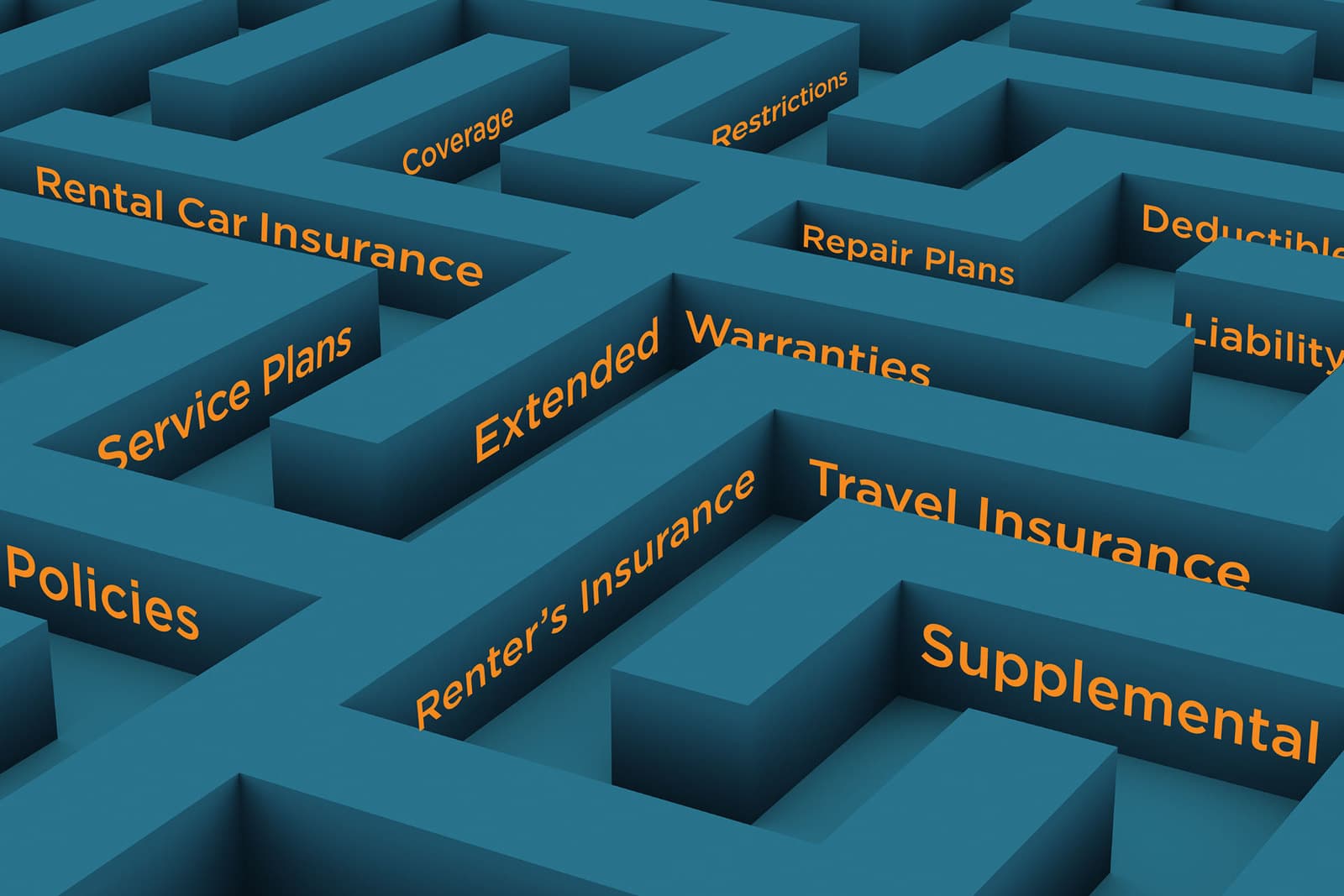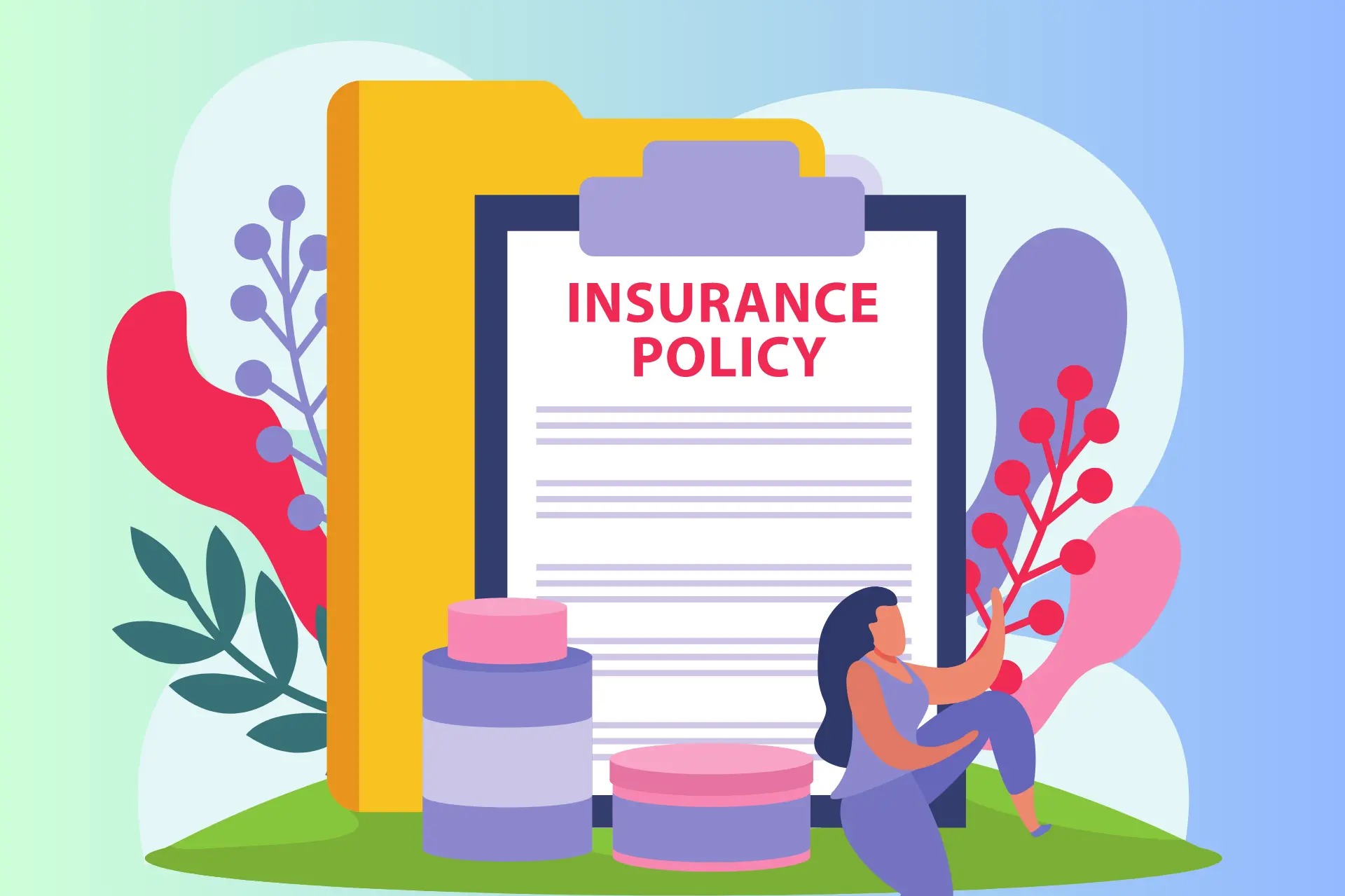

Finance
What Is Gap Coverage For Health Insurance?
Published: October 30, 2023
Discover what gap coverage for health insurance is and how it can provide financial protection for unexpected medical expenses. Enhance your financial security with this essential insurance option.
(Many of the links in this article redirect to a specific reviewed product. Your purchase of these products through affiliate links helps to generate commission for LiveWell, at no extra cost. Learn more)
Table of Contents
Introduction
In the ever-evolving landscape of healthcare, having comprehensive health insurance coverage is crucial. However, even with a well-designed insurance plan, there are often gaps in coverage that can leave individuals facing unexpected medical expenses. This is where gap coverage comes into play.
Gap coverage, also known as supplemental or bridge coverage, is a supplementary insurance policy that helps bridge the gaps in your primary health insurance coverage. It provides additional financial protection by covering expenses that may not be included in your primary plan, such as deductibles, copayments, and out-of-pocket expenses.
The purpose of gap coverage is to alleviate the financial burden that can arise from healthcare expenses that fall outside the scope of your primary insurance. These gaps can occur due to annual coverage limits, limitations on certain medical treatments or services, or high deductibles that need to be met before your primary insurance kicks in.
Having gap coverage can bring peace of mind, as it can help protect you from substantial financial setbacks in the event of unexpected medical costs. Whether it’s a sudden hospitalization, an emergency surgery, or a chronic illness requiring ongoing treatment, gap coverage can be a valuable asset in ensuring you have the necessary financial support to cover these expenses.
It’s important to note that gap coverage is not a substitute for primary health insurance. It is designed to work in conjunction with your existing insurance plan to provide additional coverage. When combined, these policies work together to offer comprehensive protection and reduce the financial strain of medical bills.
In the following sections, we will delve further into the concept of gap coverage, discuss its importance, explore the different types available, explain how it works, and provide insights on eligibility, costs, and limitations. By the end, you will have a comprehensive understanding of gap coverage and its role in safeguarding your financial well-being when it comes to healthcare expenses.
What is Gap Coverage?
Gap coverage, also known as supplemental or bridge coverage, is an additional insurance policy that works alongside your primary health insurance to fill in the gaps in coverage. These gaps can arise due to limitations in your primary plan, such as high deductibles, exclusions for certain treatments or services, or annual coverage limits.
The primary purpose of gap coverage is to provide financial protection by covering expenses that are not covered or only partially covered by your primary insurance. This can include deductibles, copayments, coinsurance, and other out-of-pocket costs. By having gap coverage, you can reduce the financial burden of these expenses and ensure that you have access to the necessary healthcare services without worrying about the cost.
Gap coverage is typically offered as an additional policy that you can purchase on top of your primary health insurance. It can be obtained from the same insurance provider or a different insurer. The specific terms and conditions of the gap coverage policy may vary, so it’s important to carefully review the details and understand what is covered and what is not.
One key aspect to note is that gap coverage is not meant to be a standalone insurance policy. It is designed to complement your primary health insurance and enhance its coverage. By having both primary insurance and gap coverage, you create a comprehensive insurance plan that leaves fewer gaps in coverage and offers greater financial protection in case of unexpected medical expenses.
It’s important to keep in mind that gap coverage is not available for all types of insurance plans. It is primarily associated with private health insurance, rather than government-sponsored plans like Medicaid or Medicare. However, there may be similar supplemental insurance options available for government-sponsored plans that serve a similar purpose.
Having a solid understanding of what gap coverage is and how it works is crucial when evaluating your healthcare insurance needs. It can help you make informed decisions about the insurance plans you choose and ensure that you have the necessary financial protection in place to handle any unforeseen medical expenses.
Importance of Gap Coverage
Having comprehensive health insurance coverage is essential for safeguarding your financial well-being in the face of medical expenses. However, even with a good primary insurance plan, there can still be gaps in coverage that can leave you vulnerable to unexpected costs. This is where gap coverage becomes crucial. Here are some reasons why having gap coverage is important:
- Protects against high out-of-pocket costs: Gap coverage helps protect you from the financial burden of high deductibles, copayments, and coinsurance that may be required under your primary insurance plan. These out-of-pocket costs can add up quickly, especially for expensive medical treatments or ongoing care. Gap coverage can help mitigate these expenses and prevent them from causing significant financial hardship.
- Covers services not included in your primary plan: Gap coverage can provide coverage for services, treatments, or medications that may not be covered by your primary insurance plan. For example, certain alternative therapies, experimental treatments, or specialized medications may not be covered under your primary plan. Gap coverage can bridge this gap and ensure that you have access to the care you need without bearing the full financial burden.
- Provides financial peace of mind: Dealing with a medical emergency or a chronic illness is stressful enough without worrying about the financial implications. Gap coverage can provide peace of mind by offering an extra layer of protection against unexpected medical expenses. Knowing that you have additional coverage can alleviate anxiety and allow you to focus on your health and recovery.
- Offers flexibility in choosing healthcare providers: Some primary insurance plans may have a limited network of healthcare providers, and going out of network can result in higher costs. Gap coverage can provide more flexibility in choosing healthcare providers by allowing you to seek treatment from specialists or facilities that may be out of network without the fear of facing exorbitant out-of-pocket expenses.
- Acts as a safety net for gaps in coverage: Even the most comprehensive primary insurance plans can have limitations and gaps in coverage. These gaps may include coverage limits on certain services, exclusions for certain treatments, or high deductibles. Gap coverage acts as a safety net to fill in these gaps and ensure that you have coverage for expenses that may fall outside the scope of your primary plan.
In summary, gap coverage is important because it provides additional financial protection, covers services not included in your primary plan, offers peace of mind, grants flexibility in choosing healthcare providers, and acts as a safety net for coverage gaps. Investing in gap coverage can help you navigate the complex world of healthcare costs and ensure that you have comprehensive coverage to address your medical needs.
Types of Gap Coverage
Gap coverage comes in various forms, each designed to address specific gaps in your primary health insurance coverage. Understanding the different types of gap coverage can help you choose the one that best suits your needs. Here are some common types of gap coverage:
- Medicare Supplement Insurance: Also known as Medigap, Medicare Supplement Insurance is available to individuals who have Medicare as their primary health insurance. This type of gap coverage helps cover the costs that Medicare does not, such as deductibles, coinsurance, and copayments. It provides additional financial protection and can reduce out-of-pocket expenses for Medicare beneficiaries.
- Hospital Indemnity Insurance: Hospital indemnity insurance pays a fixed amount for each day you are hospitalized, regardless of the actual medical costs incurred. It can help cover expenses associated with hospital stays, such as room and board, surgical procedures, and doctor’s fees. This type of gap coverage is particularly useful for individuals with high deductibles or limited hospitalization coverage under their primary insurance plans.
- Critical Illness Insurance: Critical illness insurance provides a lump sum payment in the event of a serious illness, such as cancer, heart attack, or stroke. It helps cover expenses not covered by your primary insurance, such as experimental treatments, home care, and loss of income during treatment. Critical illness insurance provides financial support when you need it most and can assist in covering the costs associated with long-term or specialized care.
- Dental and Vision Gap Coverage: Many primary health insurance plans have limited coverage for dental and vision care. Dental and vision gap coverage helps cover the costs of routine exams, preventive care, and treatments, such as fillings, root canals, eyeglasses, and contact lenses. These types of gap coverage ensure that you have comprehensive coverage for your dental and vision needs, reducing out-of-pocket expenses.
- Prescription Drug Coverage: Prescription drug gap coverage, also known as prescription drug supplemental insurance, helps cover the costs of prescription medications. It fills in the gaps left by primary insurance plans, ensuring that you have access to the medications you need without incurring substantial out-of-pocket costs. This type of gap coverage is especially important for individuals with chronic conditions or those requiring expensive prescription medications.
It’s important to note that the availability and specifics of gap coverage may vary depending on your location, insurance provider, and the type of primary insurance plan you have. It is recommended to carefully review the details of each type of gap coverage to ensure that it aligns with your healthcare needs and financial situation.
By understanding the different types of gap coverage available, you can make an informed decision and select the right policy to fill the gaps in your primary health insurance coverage. Whether it’s Medicare Supplement Insurance, hospital indemnity insurance, critical illness coverage, dental and vision gap coverage, or prescription drug coverage, each type plays a vital role in providing comprehensive coverage for specific healthcare needs.
Benefits of Gap Coverage
Gap coverage offers several benefits that can help protect your financial well-being and provide peace of mind when it comes to healthcare expenses. Here are some key benefits of having gap coverage:
- Financial Protection: One of the primary benefits of gap coverage is the financial protection it provides. Unexpected medical expenses can quickly accumulate and lead to significant financial strain. Gap coverage helps bridge the gaps in your primary health insurance, reducing out-of-pocket costs and ensuring that you have the necessary coverage for various healthcare services and treatments. It acts as a safety net, offering peace of mind and protecting your savings from being depleted.
- Enhanced Coverage: Gap coverage expands the coverage of your primary insurance plan, ensuring that you have access to services and treatments that may not be fully covered or covered at all. This can include specialized medications, alternative therapies, experimental treatments, or out-of-network providers. With gap coverage, you have the flexibility to choose the healthcare options that are best for your needs without worrying about the financial implications.
- Reduced Out-of-Pocket Costs: Gap coverage helps reduce your out-of-pocket expenses for deductibles, copayments, coinsurance, and other costs associated with healthcare services. This can be particularly beneficial for individuals with high-deductible health plans or limited coverage for certain services. By having gap coverage, you can avoid the burden of hefty medical bills and ensure that your healthcare expenses are more manageable.
- Greater Access to Healthcare: With gap coverage, you have greater access to a wider network of healthcare providers, including specialists and facilities that may be out of network. This means you have more options when it comes to receiving the care you need without the fear of facing exorbitant out-of-pocket expenses. Having the ability to see specialists or visit hospitals that are not part of your primary insurance network can be especially important for complex medical conditions or specialized treatments.
- Peace of Mind: Perhaps one of the most valuable benefits of gap coverage is the peace of mind it offers. Knowing that you have additional coverage to fill the gaps in your primary health insurance can alleviate stress and uncertainty. It allows you to focus on your health and recovery without worrying about the financial implications of medical expenses. Gap coverage provides a sense of security, knowing that you are protected in the event of unexpected healthcare costs.
By having gap coverage, you can experience the peace of mind that comes with knowing you have comprehensive financial protection and enhanced access to healthcare. From reducing out-of-pocket costs to expanding coverage options, gap coverage offers a range of benefits that can support your overall well-being. It is an investment in your health and financial security, ensuring that you are protected from the potential financial burdens of medical expenses.
How Does Gap Coverage Work?
Gap coverage works by supplementing your primary health insurance to fill in the gaps in coverage and provide additional financial protection. Here is a breakdown of how gap coverage typically works:
- Enrollment: To obtain gap coverage, you will need to enroll in a separate policy or plan that specifically offers this type of coverage. Gap coverage can be purchased from the same insurance provider that offers your primary insurance or from a different insurer.
- Policy Terms and Conditions: Each gap coverage policy will have its own terms and conditions, outlining what is covered, the coverage limits, and any exclusions or waiting periods. It’s essential to carefully review the policy details to understand the coverages and limitations.
- Coordination with Primary Insurance: Gap coverage is designed to coordinate with your primary health insurance. When you receive medical services or incur expenses, your primary insurance will typically be billed first. After your primary insurance pays its portion, any remaining eligible expenses will be submitted to your gap coverage provider for reimbursement or direct payment.
- Covered Expenses: Gap coverage helps cover expenses that are not fully covered or covered at all by your primary insurance. These expenses can include deductibles, copayments, coinsurance, and other out-of-pocket costs. Gap coverage may also provide coverage for certain treatments, medications, or services that may be excluded by your primary insurance.
- Claim Process: To receive reimbursement or direct payment for eligible expenses, you will need to submit a claim to your gap coverage provider. This typically involves providing documentation, such as medical bills, explanation of benefits from your primary insurance, and any other necessary supporting documents. The claims process may vary depending on your gap coverage policy, so it’s important to follow the specific instructions provided by your insurance provider.
- Coverage Limits: Gap coverage may have its own coverage limits, just like your primary insurance. It’s important to be aware of the coverage limits specified in your gap coverage policy and understand how they may interact with the limits of your primary insurance. Being knowledgeable about these limits can help you plan your healthcare expenses accordingly.
- Premiums and Cost: Gap coverage usually requires the payment of premiums, separate from the premiums for your primary insurance. The cost of gap coverage will depend on various factors, such as your age, health status, desired coverage amount, and the specific terms of the policy. It’s important to consider the cost of gap coverage when evaluating its benefits and determining its affordability for your situation.
It’s crucial to carefully read and understand the terms and conditions of your gap coverage policy to ensure that you are aware of what is covered and any limitations or exclusions. Additionally, it’s essential to coordinate with both your primary insurance and gap coverage provider to ensure a smooth claims process and maximize your benefits.
Overall, gap coverage works by filling in the gaps left by your primary health insurance, providing additional coverage for out-of-pocket expenses and services not fully covered by your primary plan. It acts as a supplementary policy that enhances your overall insurance protection, giving you increased financial security and peace of mind when it comes to healthcare costs.
Eligibility for Gap Coverage
The eligibility criteria for gap coverage may vary depending on the specific type of coverage and the insurance provider offering it. Here are some key factors to consider when determining your eligibility for gap coverage:
- Primary Insurance Coverage: To be eligible for gap coverage, you typically need to have an existing primary health insurance plan. Gap coverage is designed to supplement your primary insurance, so being enrolled in a primary plan is a requirement for most types of gap coverage.
- Age and Health Status: Some types of gap coverage may have age restrictions or health-related requirements. For example, critical illness insurance often requires applicants to be within a certain age range and in good health to be eligible. Dental and vision gap coverage may have age limitations or prerequisites for certain treatments or procedures.
- Open Enrollment Periods: In certain cases, there may be specific open enrollment periods during which you can enroll in gap coverage. These enrollment periods may be annual or dependent on special circumstances such as life events or changes in employment status. It’s important to be aware of any enrollment deadlines and comply with the specified timeline for obtaining gap coverage.
- Insurance Provider Requirements: Each insurance provider may have its own specific requirements for eligibility. This can include factors such as residency, citizenship, or membership in a particular organization or group. It’s important to check with the insurance provider to determine any unique eligibility requirements they may have.
It’s worth noting that some types of gap coverage, such as Medicare Supplement Insurance (Medigap), have standardized eligibility guidelines mandated by law. For example, to be eligible for Medigap, you must already be enrolled in Original Medicare Part A and Part B.
It’s recommended to consult with a licensed insurance professional or contact the insurance provider directly to determine your specific eligibility for gap coverage. They can provide you with accurate information based on your individual circumstances and guide you through the enrollment process.
Understanding your eligibility for gap coverage is crucial to ensure that you meet the necessary requirements and can secure the additional coverage you need. By evaluating your eligibility and exploring the options available to you, you can make informed decisions about obtaining gap coverage and enhancing your overall health insurance protection.
Cost of Gap Coverage
The cost of gap coverage can vary depending on several factors, including the type of coverage, your age, health status, location, and the insurance provider offering the policy. Here are some key points to consider when assessing the cost of gap coverage:
- Premiums: Gap coverage typically requires the payment of regular premiums in addition to the premiums for your primary health insurance. The amount of the premiums can vary based on the level of coverage, deductibles, and other factors specified in the policy. It’s important to review the premium costs and consider how they fit into your budget when evaluating the affordability of gap coverage.
- Deductibles, Copayments, and Coinsurance: Depending on the type of gap coverage, there may be deductibles, copayments, or coinsurance that you are required to pay when accessing healthcare services. These costs can vary based on the specific policy terms and the coverage provided. Understanding the cost-sharing requirements will give you a clearer picture of your potential out-of-pocket expenses with gap coverage.
- Coverage Limits: Gap coverage often comes with coverage limits, which determine the maximum amount the policy will pay for certain services or treatments. It’s important to be aware of these limits as they can impact the overall cost of your healthcare expenses. If you anticipate needing extensive or specialized care, ensuring that the coverage limits are sufficient for your needs is essential.
- Plan Options: Insurance providers may offer different plan options within a particular gap coverage category. These options can vary in terms of the level of coverage and associated costs. Assessing the different plan options, comparing the coverage and costs, and determining which one aligns best with your healthcare needs and budget is important.
- Age and Health Factors: The cost of gap coverage can be influenced by factors such as your age and health status. Certain types of coverage may be more expensive for older individuals or those with pre-existing conditions. It’s important to consider these factors when evaluating the cost of gap coverage and its affordability for your situation.
To determine the specific cost of gap coverage, it’s recommended to reach out to insurance providers and request quotes based on your individual circumstances. Comparing quotes from different providers can help you identify the most cost-effective options that still offer the coverage you need.
It’s also important to keep in mind that while gap coverage comes with a cost, it provides valuable financial protection and can potentially save you money in the long run by reducing your out-of-pocket expenses for healthcare services and treatments.
By carefully considering the cost of gap coverage and evaluating its benefits in relation to your healthcare needs and budget, you can make an informed decision about investing in this additional coverage to enhance your overall insurance protection.
Limitations of Gap Coverage
While gap coverage provides valuable additional protection for healthcare expenses, it’s important to be aware of its limitations. Understanding these limitations can help you make informed decisions about the coverage and set realistic expectations. Here are some key limitations to consider:
- Specific Coverage Restrictions: Gap coverage may have specific restrictions on what it covers and the extent of coverage. Certain services, treatments, or medications may not be included or may have limitations on reimbursement. It’s important to thoroughly review the policy details and understand what is covered and what is not.
- Pre-Existing Conditions: Gap coverage may have waiting periods or exclusions for pre-existing conditions. This means that if you have a pre-existing condition, you may not be eligible for immediate coverage or certain services related to your condition may not be covered. It’s crucial to carefully read the policy terms and conditions to understand how pre-existing conditions are handled.
- Annual Coverage Limits: Gap coverage may have annual coverage limits, meaning there is a maximum amount the policy will pay for covered services within a year. If you anticipate needing extensive healthcare services, ensure that the coverage limits are sufficient for your needs. Consider how these limits may impact your out-of-pocket expenses, especially if you have significant healthcare costs in a given year.
- Exclusions and Limitations of Primary Insurance: Gap coverage is designed to fill the gaps in your primary insurance coverage. However, if your primary insurance has certain exclusions or limitations, those will still apply even with gap coverage. Understanding the limitations of your primary insurance is crucial to have a clear understanding of the overall coverage you will receive.
- Premium Costs: Gap coverage requires regular premium payments, which can add to your overall healthcare expenses. It’s important to factor in the cost of premiums when evaluating the affordability of gap coverage for your budget. Assess whether the benefits of the coverage outweigh the additional premium costs.
- Availability and Accessibility: Gap coverage may not be available to everyone or in all locations. It’s important to check with insurance providers to determine if they offer gap coverage in your area and what the specific eligibility requirements are. Availability may also vary depending on your age, health status, or other factors.
It’s crucial to carefully review the terms and conditions of your gap coverage policy and ask questions to the insurance provider to ensure you have a clear understanding of the limitations and restrictions that apply. This will help you set realistic expectations and make an informed decision about whether gap coverage aligns with your healthcare needs and financial situation.
Despite its limitations, gap coverage can still provide valuable financial protection and peace of mind by reducing out-of-pocket healthcare expenses. By understanding the limitations and planning accordingly, you can maximize the benefits and effectively utilize gap coverage as part of your overall insurance strategy.
Conclusion
Gap coverage plays a crucial role in addressing the gaps in primary health insurance coverage and providing additional financial protection for unexpected medical expenses. It offers numerous benefits, including increased access to healthcare services, reduced out-of-pocket costs, and enhanced peace of mind. By bridging the gaps in coverage, gap coverage ensures that you have the necessary financial support to navigate the complex world of healthcare expenses.
Understanding the different types of gap coverage available, such as Medicare Supplement Insurance, hospital indemnity insurance, critical illness coverage, dental and vision gap coverage, and prescription drug coverage, allows you to select the most suitable options based on your healthcare needs. However, it’s important to consider the limitations of each type of coverage and how they align with your specific circumstances.
When considering gap coverage, be mindful of associated costs, including premiums, deductibles, copayments, and coinsurance. Evaluating the cost-effectiveness of gap coverage is crucial in determining its affordability and value for your individual situation.
Remember that gap coverage is designed to complement your primary health insurance, not replace it. It is intended to fill in the gaps in coverage and provide additional financial protection, but it’s important to have a solid primary insurance plan in place to ensure comprehensive coverage.
In conclusion, gap coverage acts as a safeguard, ensuring that you are protected from substantial financial setbacks when facing unexpected healthcare expenses. By understanding the various types of gap coverage, evaluating the associated costs, and considering the limitations, you can make an informed decision about obtaining this additional insurance and enhance your overall healthcare coverage.














